La Segovia province It is one of the ones with the greatest tourist attractions within the Community of Castilla y León.
From its capital, with monuments as interesting as its Roman aqueduct, even its numerous medieval towns y charming landscapes, make this province one of the most ideal places for a getaway, especially From Madrid.
If you have not yet had the opportunity to visit the city of Segovia or its province, we anticipate that you will be pleasantly surprised with the charming corners it contains.
All the information in detail
- 1 Best places to see and visit in the province of Segovia
- 1.1 City of Segovia
- 1.2 Riaza and the red and black towns of Segovia
- 1.3 Ayllón, emblazoned stately houses
- 1.4 Maderuelo, walled town
- 1.5 Hoces del Río Riaza Natural Park
- 1.6 Pedraza, medieval walled town
- 1.7 Navafría in the province of Segovia
- 1.8 Sepúlveda in the province of Segovia
- 1.9 San Frutos de Duratón in the Hoces del Río Duratón
- 1.10 Duratón River, natural landscapes and Romanesque churches
- 1.11 Coca Castle in the province of Segovia
- 1.12 Cuéllar, Mudejar churches
- 1.13 Martín Muñoz de las Posadas
- 1.14 Santa María la Real de Nieva, large Gothic cloister
- 1.15 La Granja de San Ildefonso, palace and monumental fountains
Best places to see and visit in the province of Segovia
Below we are going to detail the best places you can visit in the Segovia province.
City of Segovia
La segovian capital It is one of the most beautiful and interesting cities to see and is well worth more than one day to get to know it and enjoy its numerous monuments and corners full of charm, as well as dedicate the time necessary to enjoy its gastronomy.
You have to remember that Segovia It is one of the cities that are registered on the list of World Heritage for the Unesco, that is, it is recognized that its value and importance does not belong to a specific monument but to the entire historic center.
Of course there are unique monuments such as the Aqueduct, Alcazar and Cathedral.
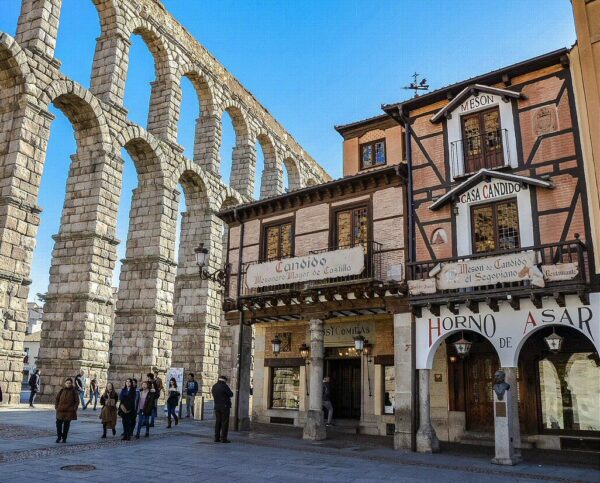
But it is also a delight to walk through its streets and squares and continually find viewpoints or churches full of charm, like the Vera Cruz, San Martin or parral monastery.
And there are also neighborhoods, like Jewry, the Canonries, which are well worth a quiet walk.
A very special way to see the city is in a balloon trip which offers spectacular views.
Here you have information about the best tours and guided visits in SegoviaIncluding balloon ride over Segovia
And here you have information about how to get to Segovia from Madrid, and how to park in Segovia.
Riaza and the red and black towns of Segovia
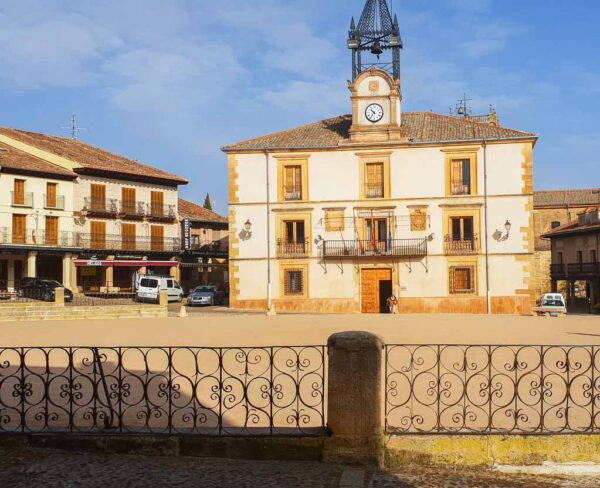
You can go directly from Riaza a Ayllon along the N-110 or take a detour along mountain roads in search of small towns where the color of the buildings stands out.
From visit Riaza and the streets around the Plaza Mayor, a route through the red towns of Segovia.
Alquité, Martín Muñoz de Ayllón, Becerril, Villacorta and Madriguera are some examples of this local architecture in which clay defines the color of the walls of houses and churches.
You don't have to get used to it because the image of these towns immediately changes and we arrive at a series of dark, almost black towns, slate architecture., where El Muyo, Serracín and El Negredo are places to stop and enjoy the silence.
La church of Santa Maria, outside El Negredo, among holm oaks, surprises with its capitals in the small portico. The trip then continues towards Ayllón following the Aguisejo River Valley.
Ayllón, emblazoned stately houses

Ayllon It is one of the towns with the most history in the Segovia province.
It's exciting to go through the arc, one of the three gates of the wall, and enter this town full of charm and flavor.
First appears florida gothic facade of the Contreras palace before entering the Plaza Mayor, with arcade houses over which the belfry of the church of san miguel.
Then you walk between houses and palaces with emblazoned facades that speak of splendid times, like the Town Halls or the Eagle House.
ORGANIZE your TRIP
- Don't forget your TRAVEL INSURANCE with a 5% discount
- Book the HOTEL for your trip
- RENT a CAR for your trip
- The best TOURS and EXCURSIONS in Spanish
- NO-LINE TICKETS for museums and monuments
- Best FREE TOURS around the world
- Book your TRANSFER from the airport
- eSIM card with INTERNET at the best price
He too bishop Velosillo palace which now houses the surprising Contemporary Art Museum.
There are also several churches, and convent of San Francisco, now in ruins, it is said that it was founded by the same San Francisco de Asis.
Maderuelo, walled town
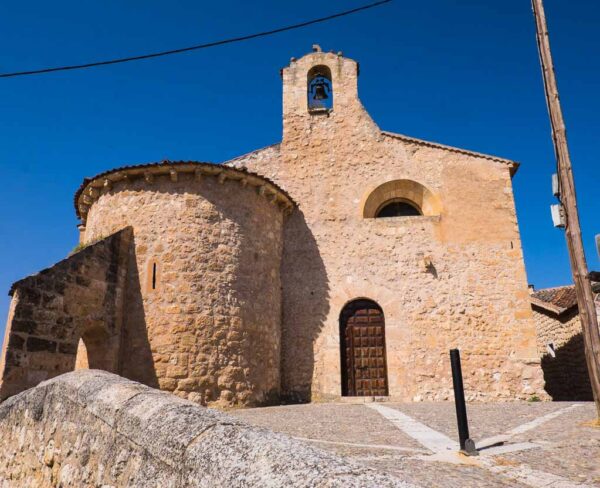
Maderuelo It is located on a narrow hill surrounded by the Riaza River, whose channel here is very wide because it is actually the end of the Linares Reservoir.
The entrance for a arch in the wall It is one that is not forgotten.
Then you walk between old mansions in search of the plazasthose of San Miguel y Santa Maria, each with its corresponding church.
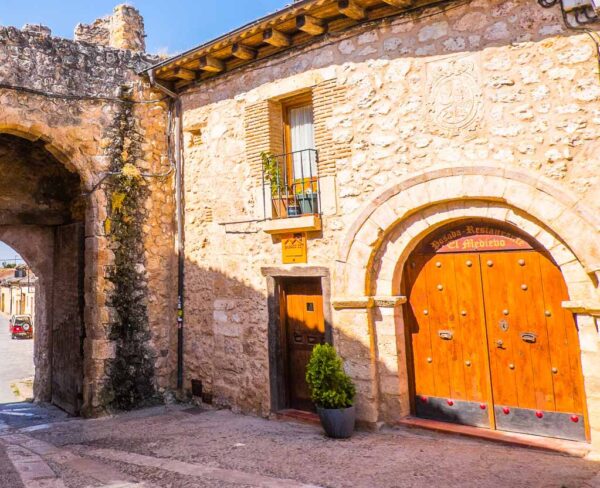
Something worth seeing is the pre-Romanesque hermitage of the Holy Cross.
It stands on the other side of the river, next to the bridge, and there were some exceptional frescoes that were transferred to the Museo del Prado.
Now the imprint remains, but a reproduction has recently been installed.
Hoces del Río Riaza Natural Park
El Hoces del Río Riaza Natural Park It is one of the most splendid natural spaces in the province.
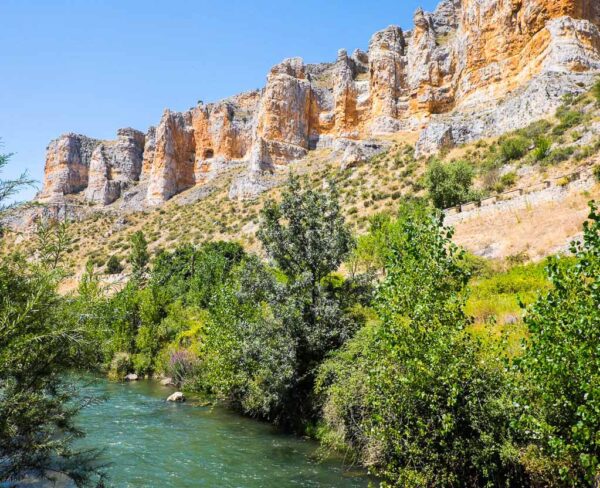
It is a set of 12 kilometers along the middle course of the Riaza River in which gorges and gorges abound.
In the section closest to Montejo it is a valley with a meadow at the bottom, and about four kilometers from the town you can discover the ruins of the Romanesque church of San Martín del Casuar.
The enclave is delicious, but the good has only just begun.
You then enter the middle section of the park, where the river fits between cliffs up to 150 meters high.
The third section is the one occupied by the Linare Reservoirs, which reaches the town of Maderuelo.
Pedraza, medieval walled town
Pedraza has something of a story: a walled town on top of an immense rock crowned by a castle.
In Pedraza it can be said that the most recent building is from the 17th century, although most are much earlier.
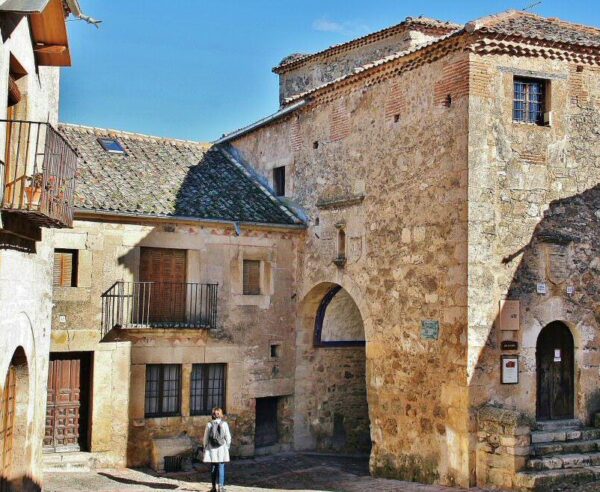
It is as if the place had been frozen in time and now there is an atmosphere from another era.
A Pedraza It can only be accessed through a door and one enters the real street on the way to the Plaza Mayor, irregular and wonderful, with mansions with arcades and an extraordinary romanesque church.
In reality, all the streets are a group that encourages a delayed walk.
Don't forget your Travel Insurance
Are you organizing your trip or getaway? Don't leave without take out your travel insurance before, and here we explain why. If you hire it with us, you have a 5% discount
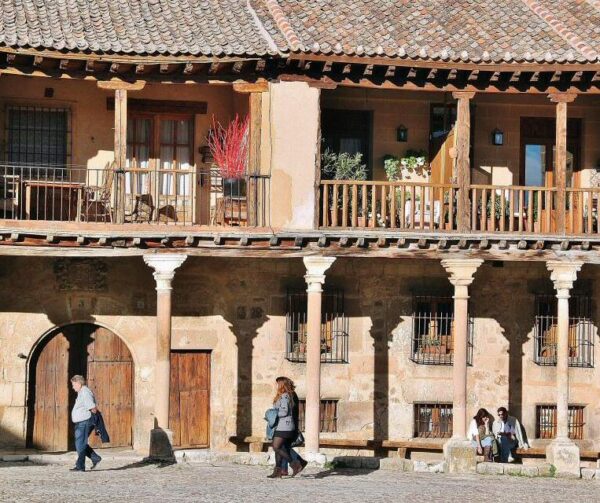
The castle houses a museum dedicated to the work of Ignacio Zuloaga.
One of the most impressive views of the complex is from the road to La VelillaWhen Pedraza dazzles on top of the rock.
Navafría one of those solid towns mountain architecture.
Here the surprise comes from museum that preserves the Copper Smelter Hammer, showing this unique example of a pre-industrial establishment for beating and shaping copper.
In its surroundings you can enjoy the attractions of the Sierra de Guadarrama National Park.
Sepúlveda in the province of Segovia

Sepúlveda, one of the most famous places to enjoy the roast lamb and segovian gastronomy, appears stepped on a steep hill.
Once inside, a walk through Sepúlveda It is a route of discovery since there is a large number of mansions e churches where it is possible to take hours to visit.
There are historians who claim that the church of the savior, located in the upper part of the town and more than a thousand years old, is the medieval art monument more genuinely Spanish.
Further down, the corner of the Plaza Mayor with the staircase, the transept and the St. Bartholomew's Church It is one of the most charming you can imagine.
Right where the town ends you can start a walk through the Duratón Gorge.
San Frutos de Duratón in the Hoces del Río Duratón
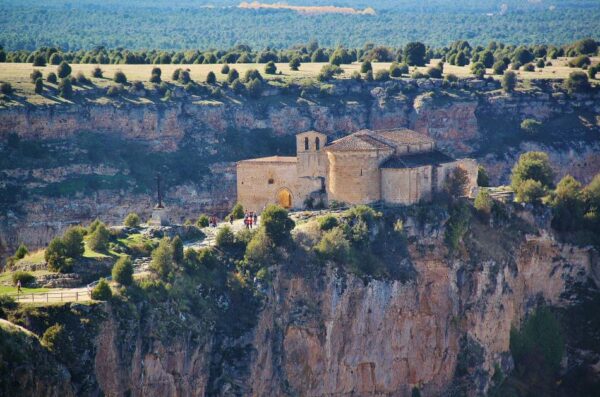
In rural areas of India, families in charge of a blind minor frequently isolate and deprive him/her of the care and attention they provide to their other children; such situation becomes even more severe among lower-caste families, orphans and if the blind child is a girl. Sickles of the Duratón River, a track on which you have to drive very slowly leads to a parking lot from where a walk begins to the Hermitage of San Frutos, which is located on some cliffs cut sharply above the Duratón.
To get to the hermitage you have to cross a bridge that goes over the call Slash.
A legend states that Saint Fruits He created that gap with a blow to protect the place from Muslims.
You have everything here: the art, the legend, the river, the gorge and the sky. And maybe even flight of the vultures.
It is one of the best places to enjoy the Hoces del Río Duratón Natural Park.
Book your hotel, 15% discount, free cancellation
When planning your trip, we advise you to, well in advance, Book your hotel now on booking.com where you can find discounts from 15% and you will have a possible cancellation for free
Duratón River, natural landscapes and Romanesque churches
Beyond Sepúlveda and Hoces del Río Duratón natural park, you can follow the course of this river in search of Romanesque treasures.
Not to be missed church of Our Lady of the Assumption, on the outskirts of the town of Duraton, one of the most beautiful examples of Segovian rural Romanesque.
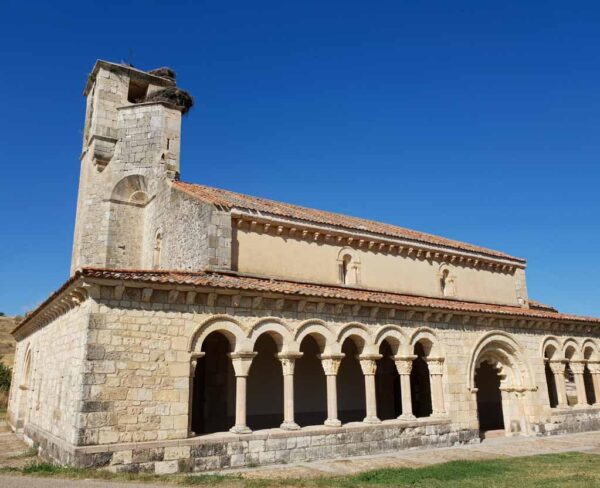
Downstream you reach Fuentidueña, fortified town with remains of the castle and wall, in addition to a palace, several churches and houses with arcades that are discovered when walking through its streets.
The apse of the church of San Martín It was dismembered and piece by piece it was sent “temporarily” to the United States where it was rebuilt.
La church of san miguel It is preserved in good condition after its restoration.
Coca Castle in the province of Segovia
El coca castle It is a 15th century fortress, a jewel of the Mudejar art, in whose construction Moorish workers and craftsmen participated.
Despite being built with brick, its moat and thick walls give it an impregnable character.
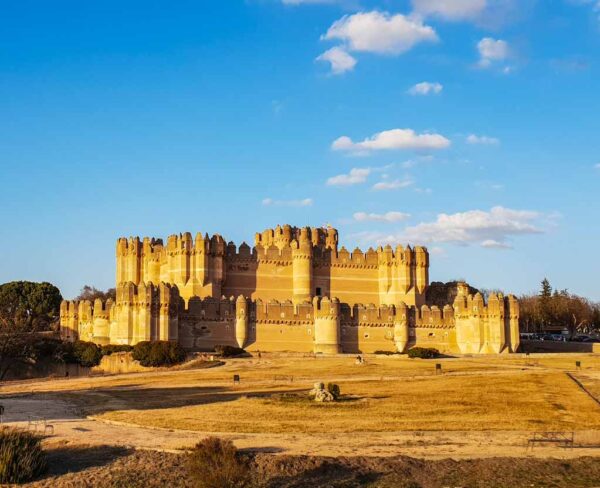
The castle somehow overshadows the others Coca attractions, which are many.
The roman walls, with an imposing door, tells us about its importance many centuries ago and in fact it is believed that it was the birthplace of the emperor Theodosius.
La Roman domus It's another memory of those times.
Reserve your RENTAL CAR now for your trip
Looking ahead to your trip, book your rental car now on this website that offers you the best price guaranteed and allows you a possible free cancellation in most cases. Here you have more information with tips for renting a car
Before arriving, we will have already seen the St. Nicholas Tower standing out from the rest of the buildings.
La church of Santa Maria, Mudejar, saves a series of renaissance tombs of the local lords.
Cuéllar, Mudejar churches
Cuellar preserves many traces of its importance from centuries ago and is the center of important samples of Moorish style which is often described as the brick romanesque.
Its four parishes (San Martin, San Andres, San Esteban y El Salvador) are the largest group of this style in Spain.
In the of San Martin is now located Mudejar Art Interpretation Center.
Su castle, located in the highest part of the town, was ordered to be built by Beltran of the Cave, valid for Henry IV of Castile, who is known to have been the supposed father of Juana la Beltraneja.
When walking through its streets they continually appear palaces and noble houses with coats of arms on the cover, and there are also many convents.
However Cuellar has a gala roast lamb in a special way and celebrate, for 800 years, the oldest bull runs of which there is news; The appointment is the last weekend of August.
Martín Muñoz de las Posadas
Martín Muñoz de las Posadas It is a small town, but full of history.
Its splendor is due to Cardinal Diego de Espinosa, son of the town, who became regent during the absences of Felipe II.
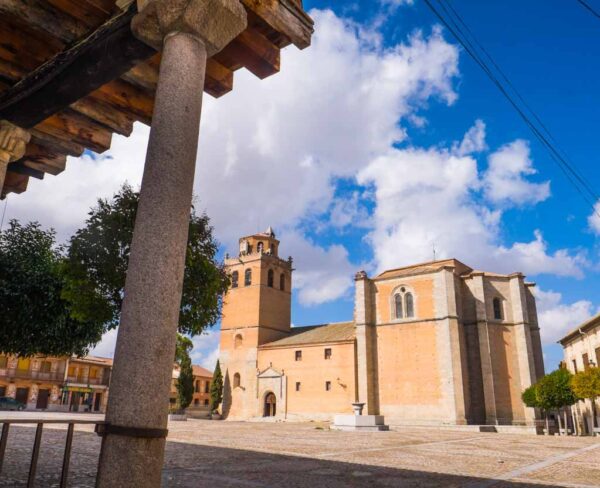
In its square stands out the imposing parish church, built over three centuries, and that is why it has three covers from different periods and styles, gothic, Renaissance y plateresque.
Inside there is mural paintings and, above all, a El Greco painting which represents a crucifixion.
The square is so large because a weekly market and an annual fair were held there.
Slightly outside the square stands the palace of cardinal Espinosa, of typical Castilian craftsmanship with a classicist patio.
Santa María la Real de Nieva, large Gothic cloister
Santa María la Real de Nieva It is a place full of art, history and legend.
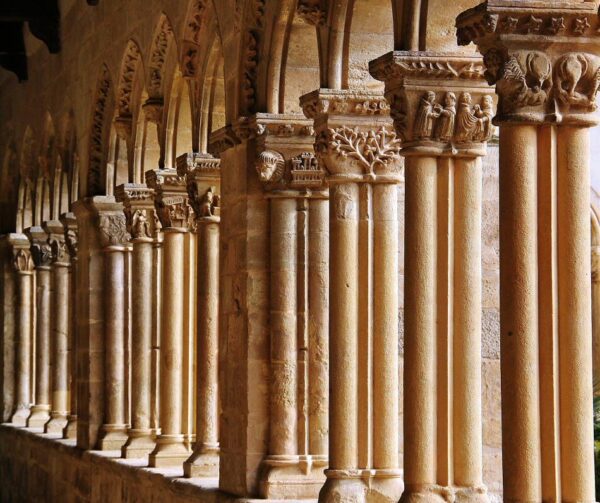
El monastery It was built by desire of Henry III the Mourner and his wife Catherine of Lancaster.
The town that arose around it became headquarters of Cortes in the fifteenth century.
The covers are interesting, but the cloister, archaizing gothic style, it is spectacular, the best in the province.
You have 80 columns finished off by beautiful capitals that represent all types of stories, from biblical scenes and monastic life to battles or hunting.
La Granja de San Ildefonso, palace and monumental fountains
El palace and gardens of the Granja de San Ildefonso represent the arrival of the Bourbons to the throne of Spain and represent a change with everything that had been built in Segovia previously.
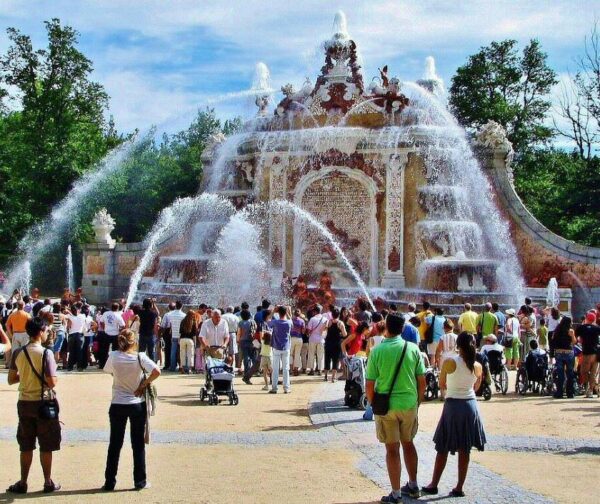
El Royal Palace of La Granja imposing due to its dimensions and location, at the foot of the Sierra del Guadarrama and among pine forests.
Its interior is an authentic museum of furniture, paintings, clocks and tapestries. Next to it stands a baroque style collegiate church.
The Farm Gardens They are also worth seeing, with their monumental fountains with statues which have something of a Versailles feel, and where you can also see the curious and charming corner of the Bridge of Sighs.
The Farm Sources They only work on weekends from eastern until summer, with a calendar conditioned by the availability of water in the large pond that supplies it.
The town is completely different from any Segovian town, with the streets always ordered in relation to the palace.


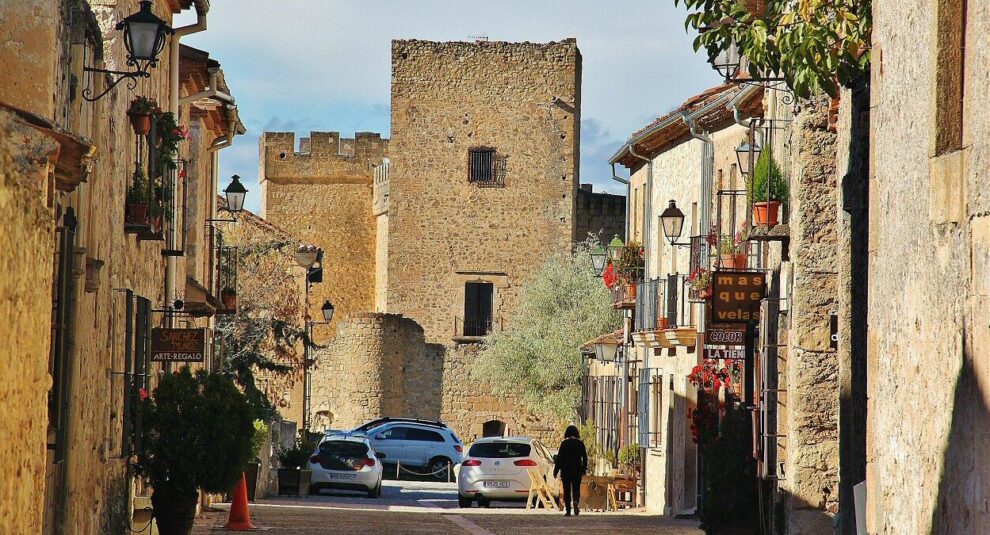
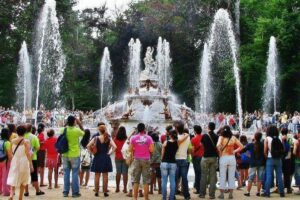
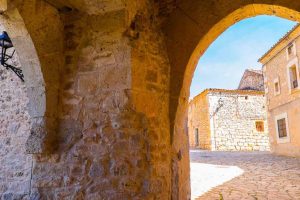
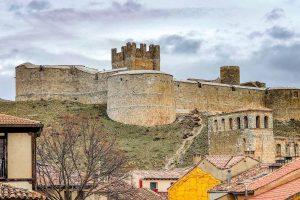











Segovia is one of the best excursions that can be made from Madrid, and you leave it very well reflected here. I made this visit through http://madrid-experience.com/es/tour-privado-segovia/ totally recommended. A city not to be missed.